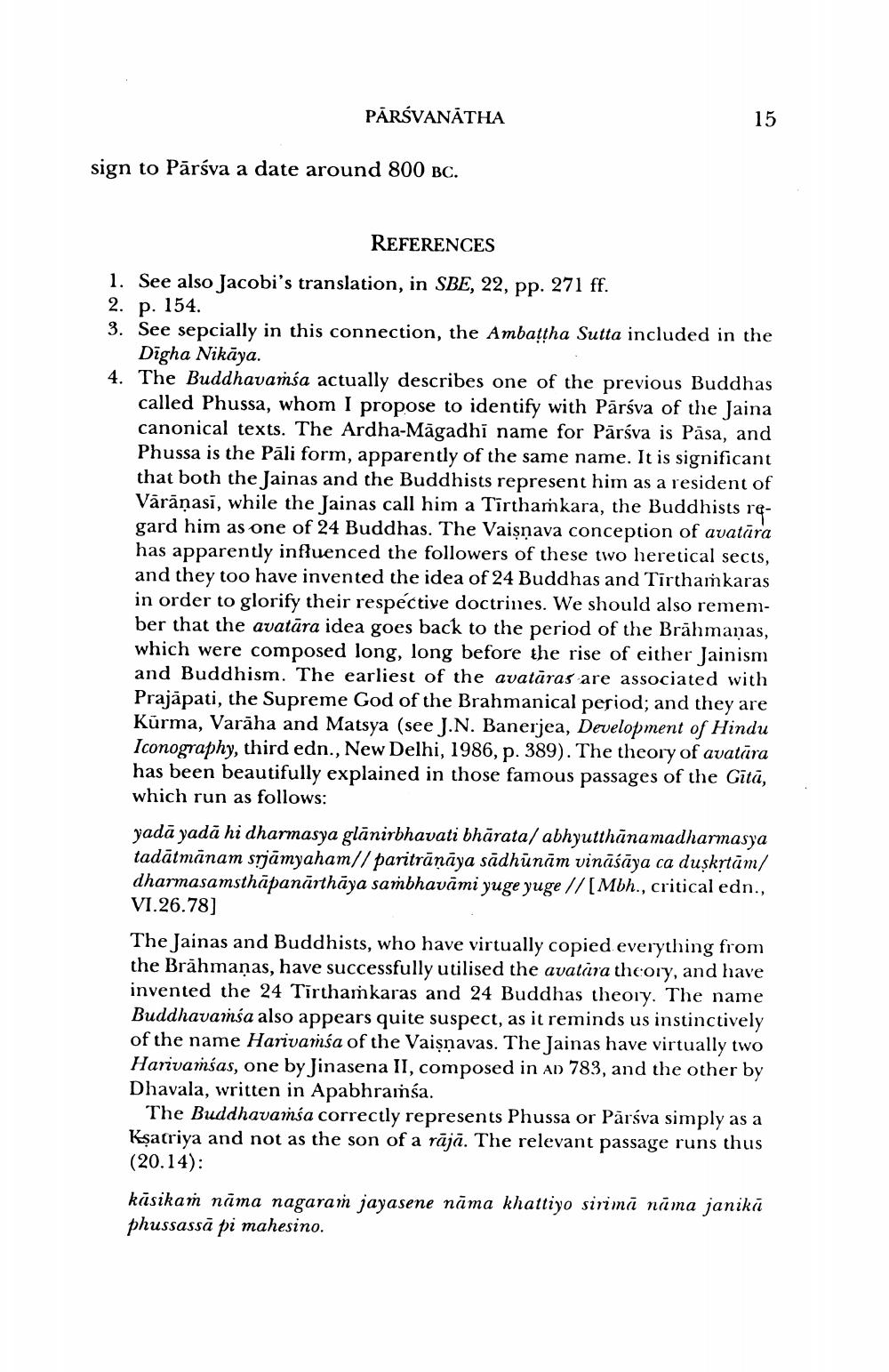________________
PĀRSVANATHA
sign to Pārsva a date around 800 BC.
REFERENCES 1. See also Jacobi’s translation, in SBE, 22, pp. 271 ff. 2. p. 154. 3. See sepcially in this connection, the Ambattha Sutta included in the
Digha Nikaya. 4. The Buddhavamsa actually describes one of the previous Buddhas
called Phussa, whom I propose to identify with Pārsva of the Jaina canonical texts. The Ardha-Māgadhi name for Pārsva is Pāsa, and Phussa is the Pāli form, apparently of the same name. It is significant that both the Jainas and the Buddhists represent him as a resident of Vārāṇasī, while the Jainas call him a Tirthamkara, the Buddhists regard him as one of 24 Buddhas. The Vaisnava conception of avatāra has apparently inffuenced the followers of these two heretical sects, and they too have invented the idea of 24 Buddhas and Tirthamkaras in order to glorify their respective doctrines. We should also remember that the avatāra idea goes back to the period of the Brāhmaṇas, which were composed long, long before the rise of either Jainism and Buddhism. The earliest of the avatāras are associated with Prajāpati, the Supreme God of the Brahmanical period; and they are Kurma, Varāha and Matsya (see J.N. Banerjea, Development of Hindu Iconography, third edn., New Delhi, 1986, p. 389). The theory of avatāra has been beautifully explained in those famous passages of the Gitā, which run as follows: yada yadā hi dharmasya glānirbhavati bhārata/ abhyutthānamadharmasya tadātmānam sejāmyaham// paritrānāya sādhūnām vināśāya ca duskytām/ dharmasamsthāpanārtāya sambhavāmi yuge yuge // [Mbh., critical edn., VI.26.78] The Jainas and Buddhists, who have virtually copied everything from the Brāhmaṇas, have successfully utilised the avatāra theory, and have invented the 24 Tirthamkaras and 24 Buddhas theory. The name Buddhavainsa also appears quite suspect, as it reminds us instinctively of the name Harivamśa of the Vaisnavas. The Jainas have virtually two Harivamsas, one by Jinasena II, composed in an 783, and the other by Dhavala, written in Apabhraíśa.
The Buddhavamsa correctly represents Phussa or Pārsva simply as a Ksatriya and not as the son of a rājā. The relevant passage runs thus (20.14): kāsikam nāma nagaram jayasene nāma khattiyo sirimā nāma janikā phussassā pi mahesino.




